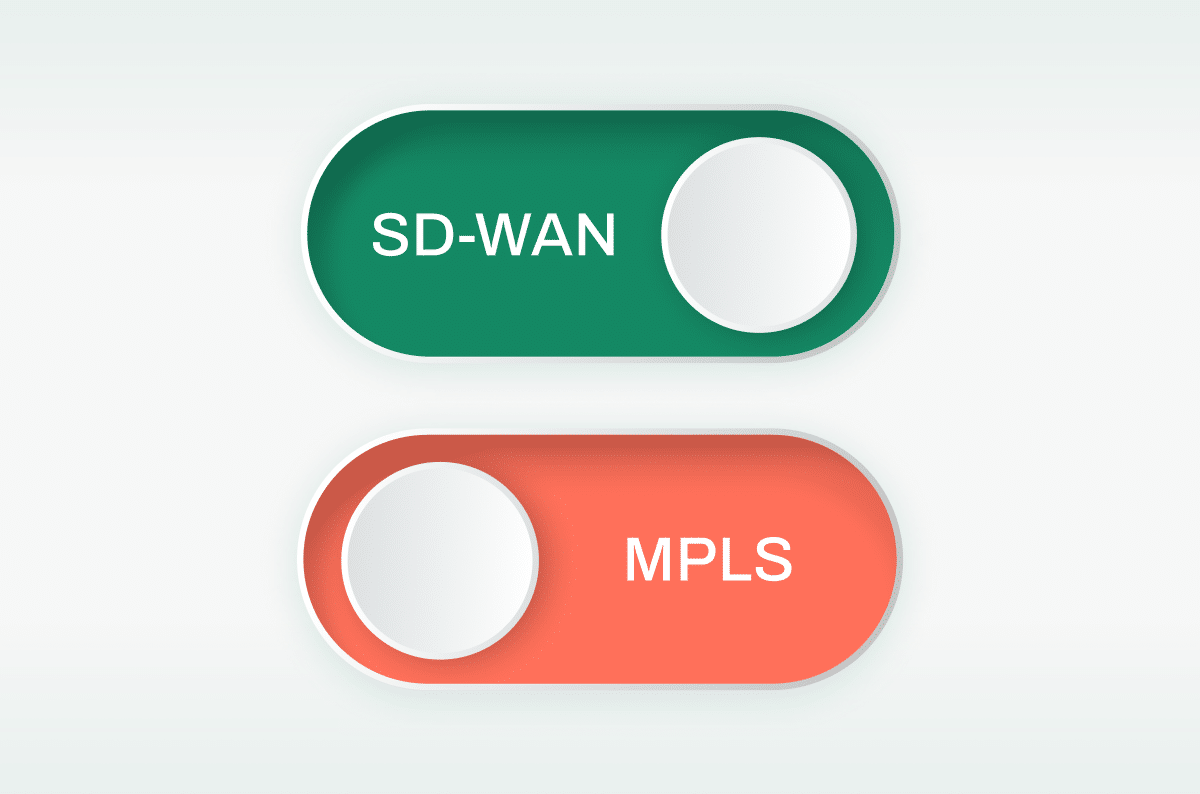Pros and Cons of MPLS: Is It Right for Your Network?

|
Listen to post:
Getting your Trinity Audio player ready...
|
MPLS is a reliable routing technique that ensures efficiency and high performance. However, global changes like remote work, mobile connectivity and cloud-based infrastructure require businesses to reconsider their MPLS network strategy. This blog post explains what MPLS is, how it works, MPLS advantages and disadvantages and what to consider next.
What is MPLS?
MPLS (Multiprotocol Label Switching) is a network routing technique that is based on predetermined paths, instead of routers determining the next hop in real-time. This enables quicker and more efficient routing, as the router only needs to view a packet label, instead of looking up the address destination in complex routing tables. In addition, using MPLS requires setting up a dedicated connection. It is de facto a private network.
How does MPLS Work?
In MPLS, when a data packet enters the network, it is assigned a data label by the first router in the path. The label predetermines the path the packet needs to follow. It includes a value, as well as additional fields to determine the quality of service required, the position of the label in the stack and time-to-live. Based on this label, the packet is routed to the next router in its path.
The second router that receives the packet then reads this label and uses it to determine the following hop in the network. It also removes the existing label from the packet and adds a new one. This process is repeated until the data packet reaches its destination. The last router in the path removes the label from the data packet.
Since the path is predetermined, the routers only need to read the label and do not need to check the packet’s IP address. This enables faster and more efficient routing.
MPLS routing terms:
- Label Edge Router (LER) – the first or last routers that either assign the first data label and determine the path or pop the label off the packet. The first router is also known as Ingress Label Switching Router (Ingress LSR) and the last as Egress LSR.
- Label Switching Router (LSR) – the routers along the path that read the labels, switch them and determine the next hop for the packets.
- Label Switching Path (LSP) – the path the packets are routed through in the network
Now let’s look at the advantages and disadvantages of MPLS routing.
What Others Won’t Tell You About MPLS | Find OutMPLS Advantages & Benefits
MPLS provides multiple advantages to network administrators and businesses. These include:
Reliability
Routing based on labels over a private network ensures that packets will be reliably delivered to their destination. In addition, MPLS enables prioritizing traffic for different types of packets, for example routing real-time, video packets through a lower latency path. This reliability is guaranteed through service level agreements (SLAs), which also ensure the MPLS provider will resolve outages or pay a penalty.
High Performance
MPLS dedicated infrastructure assures high-quality, low latency and low jitter performance. This ensures efficiency and a good user experience. It is also essential for real-time communication, like voice, video and mission-critical information.
MPLS Disadvantages
However, there are also disadvantages to MPLS.
Expensive
MPLS services are expensive, due to their commitment to ensure high bandwidth, high performance and competitive SLAs. Deployments and upgrades of the required private connection can also turn into a resource-intensive process.
Rigid
MPLS is built for point-to-point connectivity, and not for the cloud. Therefore, the WAN does not have a centralized operations center for reconfiguring locations or deploying new ones and does not enable quick scalability.
Does Not Support All Edges
MPLS cannot be extended to the cloud since it requires its own dedicated infrastructure. Therefore, it is not a good fit for remote users or for connecting to SaaS applications.
Conclusion
MPLS is a trustworthy solution for legacy applications in enterprises. However, the transition to the cloud and remote work require businesses to reconsider their network strategy and implement more cost-effective and efficient solutions. Alternatives like SASE (Secure Access Service Edge) combine all the advantages of MPLS, SD-WAN and more.
To learn more about SASE and to see how it improves your MPLS connectivity, contact us.















